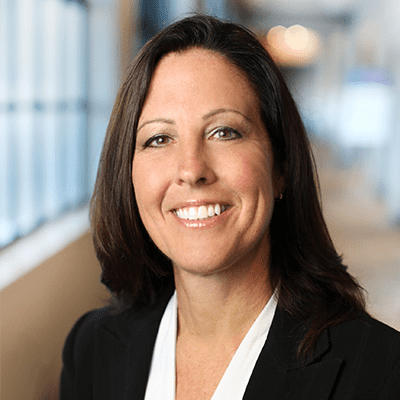- Solutions
- Solutions
- Home Health
- Hospice
- Life Plan Community
- Palliative Care
- Private Duty
- Senior Living
- Skilled Nursing
- Skilled Nursing
- Skilled Nursing Software
- Advanced Insights
- Customer relationship management
- Data and analytics
- Financial & operations management
- Marketing
- Nutrition management
- Referral management
- Regulatory compliance
- Retail management
- Resident engagement
- Revenue cycle management
- Skilled nursing interoperability
- Partners
- Blogs
- Resources
- About
- User Conference

How to: Manage risk with these 3 strategies for clinicians (part I)
In skilled nursing facilities, there is a high demand for leveraging data to improve clinical and financial outcomes. What we have all learned through the recent COVID19 pandemic, is that time is precious, and caregivers don’t have time for distractions or added responsibilities. With that said, clinicians are looking for ways to work smarter, not harder. To do so, many have turned to predictive analytics to protect their bottom-line results and most importantly, improve their quality of care.
Three strategies to successfully manage risk and improve quality of care
1) Use data to discover effective ways to lower hospital readmissions
Lowering hospital readmissions has been front and center for a very long time. Most providers understand that having a strategic plan is critical to their success. We all know this is a very high priority for CMS, and a significant investment has been made to conduct case studies. Results of the case studies have varied because all organizations are not the same. However, there are clear themes across the board that all point to the use of data. Successful organizations that have shown the most positive results all leveraged their EHR to manage their quality initiatives. Rather than relying on past best practices, a renewed approach to leveraging data to reduce readmissions has been the highest priority.
To successfully help to reduce readmissions, you not only need access to data, but you need it in real-time. It needs to be easy to understand, and it needs to be actionable. When it comes to your data, we recommend looking at:
Resident history data prior to admissions from the hospital
Assessing admissions with scoring capabilities to determine a go/no go admission scenario
Medication data
Risk mitigation data to enable providers to predict incidents directly tied to readmission, like falls and change in condition
Factors for possible risks such as vitals, comorbidities, and ADL data
To recap, providers with a holistic view of their patient data can help reduce readmissions and provide a higher quality of care.
2) Take control of the data you need
The days of outsourcing data analysis for many organizations may be a thing of the past, especially when it comes to your EHR data. Case in point, the data belongs to you, not the vendor. A third party outside of your organization may or may not have the ability to gain access to all your data. When you plan to use data to make more informed decisions, you also need to have the right data. Technology now empowers you to get to this information, without having to create your own sophisticated algorithms. This notion has led many providers to think this is not within reach of their current expertise.
Before you do anything, take a step back and evaluate your EHR.
When it comes to predicting, managing, and understanding risks, your EHR is a gold mine. The real value is knowing how to extract that data and make sense of it in a useful manner. You may come to find that leveraging technology is a great tool to replace manual work. Successful providers see technology through a different lens.
Below are some things you should look for in your EHR.
Access to all resident data with the ability to filter by specific diagnosis, specific vitals, specific orders, specific notes, specific assessment data – highlighting the ones at risk or that might need more attention.
The ability to see a change in a condition so you can take immediate action.
Quality measures to help ensure accuracy and verify resident information.
3) Prevent deterioration in health with the use of predictive data
Now, providers have a higher standard of how they will leverage data and it has a direct correlation with risk management. There is still a lot of value in having information available to tell you what happened, as well as telling you why something happened. However, the real value is having information that can guide you to seeing what will likely happen. There are a few terms used to describe this information, and most of you have heard of it described as predictive data. You may not realize it, but predictive data is likely within reach.
References
https://www.cms.gov/mmrr/Briefs/B2013/mmrr-2013-003-02-b01.html
Disclaimer
The content in this presentation or materials is for informational purposes only and is provided “as-is.” As such, the information and views expressed herein may change without notice. So, we encourage you to seek as appropriate, regulatory, and legal advice on any of the matters covered in this presentation or materials.
Request a demo today for a closer look at MatrixCare.
See what MatrixCare can do for you
Kevin Whitehurst
Kevin Keith Whitehurst, Senior Vice President, Skilled Nursing Solutions, has been a key player in LTPAC technology since 1990. Whitehurst has held many leadership positions including IT Director for one of the first developers of MDS software systems to, most recently, SVP, Client Services for MatrixCare. In his current role, he is responsible for the success of the Skilled Nursing Solutions Group and oversees Product Management, Professional Services, Sales and Marketing, and Client Support for that group. A 26 year veteran, Whitehurst has dedicated his career to improving Skilled Nursing Providers experience with technology. Whitehurst holds degrees from San Bernardino Valley College and the Los Angeles School of Business and also served in the U.S Air Force.
Related Posts




See MatrixCare in action
Start by having a call with one of our experts to see our platform in action.
MatrixCare offers industry-leading software solutions. Thousands of facility-based and home-based care organizations trust us to help them improve efficiency and provide exceptional care.
© 2025 MatrixCare is a registered trademark of MatrixCare. All rights reserved.




